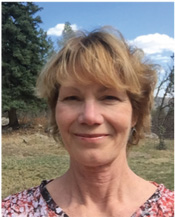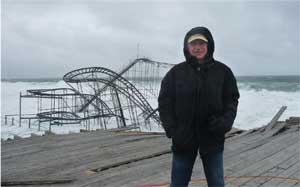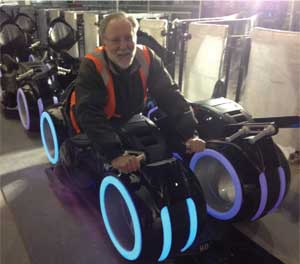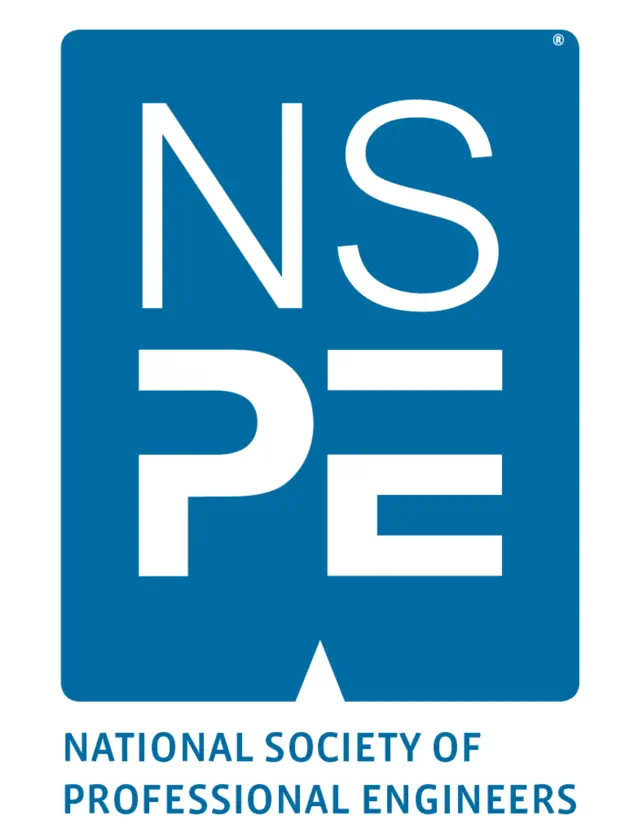July/August 2018
Hidden Dangers?
BY EVA KAPLAN-LEISERSON
As temperatures warm and students empty their lockers, thoughts turn to summer fun. For many families, that includes a trip to an amusement park, water park, or traveling carnival. The vast majority of those trips are nothing but a good time. But for some there can be painful and tragic consequences.
The amusement industry emphasizes the overall safety of their rides and the rarity of incidents; however, regulation and oversight are inconsistent nationwide. When fatalities occur, some states have turned to professional engineers to help ensure safety, enacting laws requiring ride inspections by PEs or other qualified professionals. However, professional engineer involvement throughout various stages can help protect the public.
The Scope of the Issue
The chance of being seriously injured on a fixed-site ride at a US amusement park is 1 in 17 million, according to the International Association of Amusement Parks and Attractions (IIAPA). However, this figure doesn’t reflect all types of facilities or injuries. In addition, reporting requirements vary widely by state.
According to the Consumer Product Safety Commission, 22 fatalities have been associated with amusement attractions since 2010, not including water parks or slides. CPSC estimates 29,400 US injuries in 2017 associated with amusement attractions.
Previously, the commission regulated both fixed-site amusement parks and mobile carnivals. However, in the 1980s, Congress put fixed-site parks under state and local government oversight. Regulations vary greatly, and a handful of states have no laws requiring inspections. (IIAPA says these states contain few, if any, amusement parks.) Insurance companies may require parks to conduct annual inspections, explains a 2016 Insurance Journal article, but the companies set the criteria.
No two states inspect rides the same way, amusement park safety consultant Ken Martin explained in the article. Forget being on the same page, he said: “We’re not even close to being in the same book, state to state.”
Letter of the Law
A fatality in Kansas has played a major part in bringing amusement park safety to the forefront. In 2016, a 10-year-old boy was decapitated on a water slide marketed as the tallest in the world. Five individuals have been criminally charged in the incident. According to a Washington Post article, the ride designers had no credentials in mathematics, physics, or engineering and allegedly used “crude trial and error” to build the ride. In addition, investigators say that test results from an engineering firm hired by the company were ignored.
The accident made world news and generated numerous discussions about amusement park safety, explains Travis Lowe, executive director of the Kansas Society of Professional Engineers. “The tragedy unfortunately illustrated the need to tighten rules and accountability for parks of all sizes.”
Previously, Kansas only required parks to conduct annual exams privately, with no requirement to share data with the state. S.B. 70, passed in 2017, requires annual inspections of rides by qualified professionals, including licensed professional engineers with at least two years of experience in the amusement ride field. Lowe testified in support of the bill.
Kansas law also now requires that rides be constructed, maintained, operated, and repaired based on standards from the American Society for Testing and Materials International. ASTM’s Committee F24 on Amusement Rides and Devices provides 19 standards.
Ohio is considering legislation known as “Tyler’s Law,” after the 18-year-old Marine Corps recruit who was killed when a ride malfunctioned in 2017 at the Ohio State Fair, due to what the manufacturer later deemed “excessive corrosion.” Seven others were severely injured.
The bill (H.B. 631) requires the Ohio Department of Agriculture to hire professional engineers as inspectors if available. If a qualified PE is not available, the director can hire an individual who has earned an inspector certification from the National Association of Amusement Ride Safety Officials.
In addition, the proposed legislation directs the agriculture department to follow the voluntary ASTM standards for testing and materials, or their equivalent, and requires more detailed logs of maintenance and repairs.
The Ohio Society of Professional Engineers is reviewing the legislation.
A Patchwork Quilt
Legislation that follows serious incidents points to a key challenge: change often only happens when it’s forced. “There have been fits and starts, almost always triggered by a terrible tragedy,” says Kathy Fackler, founder of Saferparks. The nonprofit organization launched in 2000 to help prevent amusement ride accidents via research, information sharing, and public safety policy.
Fackler, one of the few consumer members of the ASTM F24 committee, has been involved in the issue for about 20 years. Her advocacy began after her five-year-old son’s foot was torn in half in a roller coaster accident.
At the time, California exempted fixed parks from regular state inspections. Fackler’s work helped pass a state law in 1999 that now requires state inspectors to perform an annual records audit, unannounced operational inspection, and physical inspection. In addition, ride owners must have a “qualified safety inspector” annually certify that each ride meets industry standards and state regulations.
The individual may be a park employee, third-party inspector, or state inspector and may be either a licensed engineer with at least two years of experience, or have five years of experience and other qualifications.
Owners and operators must also provide written certification from a licensed engineer that the ride meets all applicable design requirements before opening and after any major modification.
Fackler also helped with efforts by Senator (then Representative) Edward Markey (D-MA) to pass federal legislation that would put permanent parks back under federal oversight via the Consumer Product Safety Commission. CPSC is the only authority that could impose a remedy on rides in multiple states after incidents, says Fackler. That legislation has never passed, however, despite repeated attempts.
But Mark Rose, vice president of design and engineering at Busch Gardens in Tampa, Florida, points to the concerted efforts that go into safety at large permanent parks.
At Busch Gardens, every ride is inspected every day, he says. Fifty-five mechanics and nine electricians inspect rides to make sure they’re safe. “Some of our rides will get you a little dizzy, but they should not harm you in any way,” he says. In addition, Busch Gardens hires third-party inspectors who are PEs.
Florida requires a professional engineer or qualified inspector to annually inspect permanent rides, but exempts large parks with over 1,000 employees with their own full-time inspectors.
Rose believes the industry gets a black eye from traveling shows, pointing to issues that can arise with carnival rides that have to be taken apart repeatedly and set up elsewhere. Florida requires the inspection of all temporary amusement rides each time they’re set up at a new location, but not all states do.
Ed Pribonic, P.E., was previously manager of engineering and architecture at Disneyland and now works as a consultant in the amusement industry. He has experience in ride design, maintenance, and inspection and is a longtime member of ASTM’s F24 committee. He is also frequently retained as an expert witness by legal counsel.
State agencies are often understaffed and underfunded, he says, and inspectors are not always well qualified. Agencies should be staffed by PEs, he says. “You’re talking about an organization that is responsible for assuring safety of big-time machinery, passenger-carrying devices. Most of the states don’t have PEs or engineers at top positions.”
Pribonic would like to see a universal engineering-based inspection protocol for amusement rides and devices. Currently, inspection checklists provided by manufacturers to ride owners include only items for visual inspection, he explains. He’d like to see a much more uniform and detailed process.
Design and Testing
The difficulty in ensuring amusement and water park safety goes beyond inspection.
Joel Fritsche, P.E., formerly executive director of quality assurance for the Walt Disney Company, now also works as an industry consultant. He explains that amusement safety is a “multidimensional problem,” ranging from design to rider behavior.
For example, he explains, design engineers must predict loads and forces, imperfections in the ride’s surface, wind, sway behaviors of the structure, and so forth. Designers must also understand materials and factors such as fatigue.
NSPE member John Heneage, P.E., a consulting engineer who has worked on projects for large theme parks in Florida, says his firm has been called in to fix issues with rides that were inadequately designed. Unqualified individuals can perform design work due to the industrial exemption, he emphasizes, which classifies rides as industrial products.
In reality, Heneage says, rides are one-of-a-kind designs, like those for a bridge or airport. “On the design end, they need professional engineering.” That includes steps such as looking at failure modes and performing “what if” analyses, he says.
While large companies are usually very safety conscious, he explains, others may not be. Thus, Heneage believes there should be a standard legal requirement for amusement park rides to have safety analyses prepared by professional engineers.
Design documents need to be sealed by PEs, says Heneage—including structural, mechanical, electrical, and control.
Pribonic thinks PEs are most critical in standards development and for developing testing protocols for manufacturers. He says he routinely finds rides that specify operating parameters such as rider capacity or water flows but the rides are never tested to these operating points.
Having PEs on staff, or hiring outside engineering firms, can go a long way toward ensuring full cycle testing on various forces, conditions, and riders, he says.
While manufacturers may pick requirements such as height minimums because they’re “convenient,” a PE would say, “Let’s check this out. Does he fit in the restraint? Can his feet reach the floor for bracing? Is he too slim? Will he slide out?” Or, on a water slide, “How high will he go up the side with centrifugal forces?” Based on those factors, Pribonic explains, a PE would arrive at the requirement of who’s allowed on the ride.
While bigger manufacturers do employ engineers, some smaller independent ones don’t have any engineers on staff, he says. “I think it’s counterintuitive that you want to develop or manufacture a huge piece of machinery you’re going to put people on, including children, and send it into space at 60 or 80 miles per hour and through multiple dimensional changes and forces, and you don’t have an engineer.”
Additional Challenges
Between design and inspection, other difficulties can arise, Fritsche points out. For example, in fabrication. Is the ride made the way you’d planned? Are the materials exactly the ones you specified? Was the welding done in a high-quality manner? Overseeing some of these aspects may require long-term experience in the business, he says.
Maintenance plays a part as well, over the life of an attraction. And parks are under financial pressure, says Pribonic, with small windows of time and weather in which they can generate revenue. “They’re not looking to spend more than they absolutely have to or are forced to.”
Maintenance isn’t always up to par because there aren’t maintenance technician requirements, Pribonic says. He believes ride inspection and maintenance should be structured like Federal Aviation Administration aircraft inspection and maintenance programs, with qualification, reporting, and record requirements.
Rather than parks conducting reactive maintenance, as is often the case, the PE says, they should use schedules that dictate replacement of parts after a certain period of time or number of cycles, like on aircraft.
Finally, there’s the people element. For instance, are riders listening to and following instructions? Are operators verifying height and weight requirements? Pribonic says operators often don’t want to ask riders how much they weigh or how old they are, but “for the sake of political correctness, people get injured and killed.”
Trend Towards Safety?
According to Pribonic, more companies are involving engineers in ride manufacturing. One impetus has been the creation of additional ASTM standards, he says, and recognition of their importance by states.
Fackler has seen standards beefed up since 2000, as the internet has provided opportunities for aggregated data that she says has opened eyes. And engineers involved with the F24 committee have “really stood up for safety,” she says.
However, Pribonic believes that litigation has driven changes “whether people admit it or not.” Attorneys hire engineers like himself to do forensic analysis after incidents. And he says that manufacturers and operators are learning that “We just can’t wing it anymore. We’re going to have to make sure we’re right.”
While published statistics indicate that ride safety has been at a high level for many years, and the percentages of injuries remains consistent, Pribonic believes the numbers are probably on the rise due to increases in ridership numbers. A tiny injury rate looks good, he says, but the number of people getting hurt may actually be increasing.
The industry has to look past contentment with a small percentage of injuries and work to reduce totals, he says. “Behind those numbers, I still have to investigate fatalities, quadriplegic and paraplegic events, other serious injuries. Statistics don’t make clear the tragedy of events and how many people behind the victim are affected.”
While Pribonic is not in favor of federal oversight (“all I see is more complications, slowdowns, and costs”), he says the federal government could make mandatory that states recognize and use ASTM standards without exemptions that are sometimes inserted.
He’d also like to see measurable performance criteria that everyone in the chain of commerce can be held to, including manufacturers, parks, states, and maintenance personnel. And he’d like to see more independent PEs as members of ASTM.
“I’d encourage all PEs who have interest in this field to get into it,” he says. “If you like it, get involved with ASTM, help make it better.”
Fritsche, also an ASTM member, suggests PEs who want to get involved get as much education as possible, and find a mentor.
“Have courage,” he says. “Some of the things you’ll see will scare you.” But he emphasizes that the field offers great opportunities for an exciting career.
Rose puts it this way: “Everybody wants to have thrilling attractions that their guests will like. The bottom line is it’s got to be safe, [including] design, installation, fabrication, inspections, and ongoing maintenance. It’s always about safety.”


 Volunteering at NSPE is a great opportunity to grow your professional network and connect with other leaders in the field.
Volunteering at NSPE is a great opportunity to grow your professional network and connect with other leaders in the field. The National Society of Professional Engineers (NSPE) encourages you to explore the resources to cast your vote on election day:
The National Society of Professional Engineers (NSPE) encourages you to explore the resources to cast your vote on election day: KATHY FACKLER,
KATHY FACKLER, ED PRIBONIC, P.E., EVALUATED DAMAGES TO THE JET STAR ROLLER COASTER IN SEASIDE HEIGHTS, NEW JERSEY, AFTER HURRICANE SANDY.
ED PRIBONIC, P.E., EVALUATED DAMAGES TO THE JET STAR ROLLER COASTER IN SEASIDE HEIGHTS, NEW JERSEY, AFTER HURRICANE SANDY. JOEL FRITSCHE, P.E., TESTS OUT THE VEHICLE FOR THE TRON LIGHTCYCLE POWER RUN, A STEEL ROLLER COASTER ATTRACTION AT SHANGHAI DISNEYLAND PARK.
JOEL FRITSCHE, P.E., TESTS OUT THE VEHICLE FOR THE TRON LIGHTCYCLE POWER RUN, A STEEL ROLLER COASTER ATTRACTION AT SHANGHAI DISNEYLAND PARK.